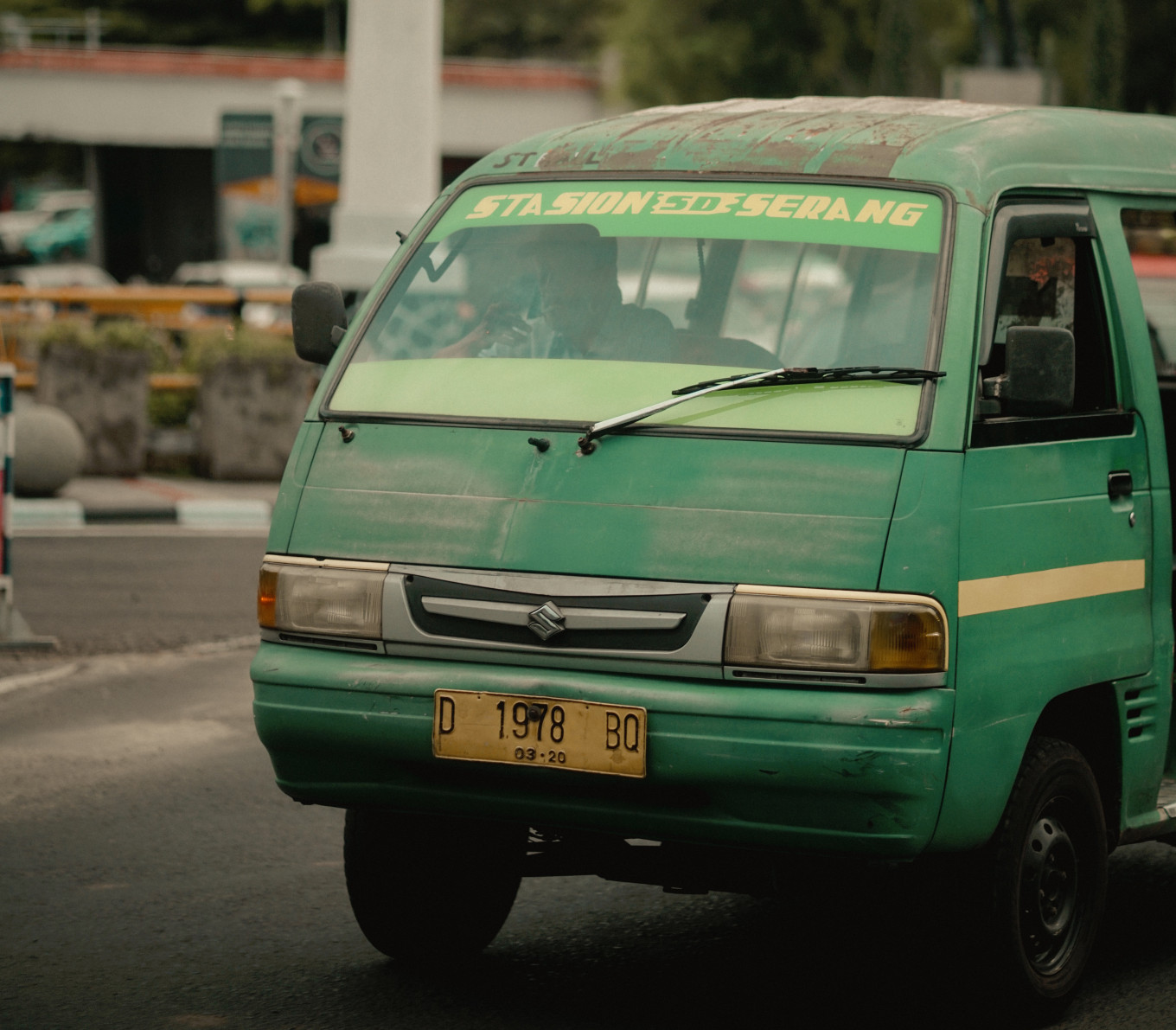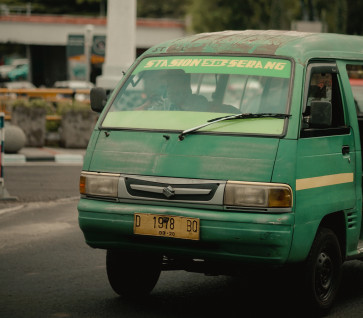Popular Reads
Top Results
Can't find what you're looking for?
View all search resultsPopular Reads
Top Results
Can't find what you're looking for?
View all search resultsAngkot daze: the complicated history of Indonesia's public transportation
The tangled existence of Bandung's angkot and its future in the city’s modern landscape
Change text size
Gift Premium Articles
to Anyone
The tangled existence of Bandung's angkot and its future in the city’s modern landscape.
The angkot, short for “angkutan kota” (city transportation), holds a lot of meaning for most people in Bandung. While some may romanticize its existence and reminisce about the olden times where people would mostly rely on the angkot in getting around the city, others would point their finger at the color-coded armada and blame them for being a hindrance to progress in these modern times.
Tension: Although facing a lot of resistance, the government is pushing forward with the Bus The Rapid Transit program projects a conversion from the angkot to buses in 2023. “Drivers will not need to worry. Now you're driving the angkot, but then you'll be a bus driver [in the future],” said Darmawan, head of the Department of Transportation in Bandung, speaking from Bandung City Hall on Dec. 26, 2022. (Unsplash/Fiqry Choerudin)Grassroots
In 2010, a stocky young man was running in the middle of Jl. Tamansari, just 50 meters away from the Bandung Institute of Technology (ITB) rear gate, clasping his brown satchel and yelling: “pickpocket!”
He was chasing an angkot that he just rode in, realizing that he had lost his wallet not long after alighting. The north-bound angkot, however, did not stop and the young man got tired of chasing it. He breathed frantically as he slowed down his steps while cars, inches away behind him, were honking their horns.
It was one of the most vivid memories of my days as a student living in Bandung. Although it was rare to witness, rumors of ‘unpleasantness’ associated with riding an angkot circulated a lot. Mine, fortunately, revolved only around being dropped off in the middle of the journey, usually for the driver to either turn back avoiding traffic or just simply to go home.


![Tension: Although facing a lot of resistance, the government is pushing forward with the Bus The Rapid Transit program projects a conversion from the angkot to buses in 2023. “Drivers will not need to worry. Now you're driving the angkot, but then you'll be a bus driver [in the future],” said Darmawan, head of the Department of Transportation in Bandung, speaking from Bandung City Hall on Dec. 26, 2022.](https://img.jakpost.net/c/2023/01/04/2023_01_04_134141_1672801304._medium.jpg)

















